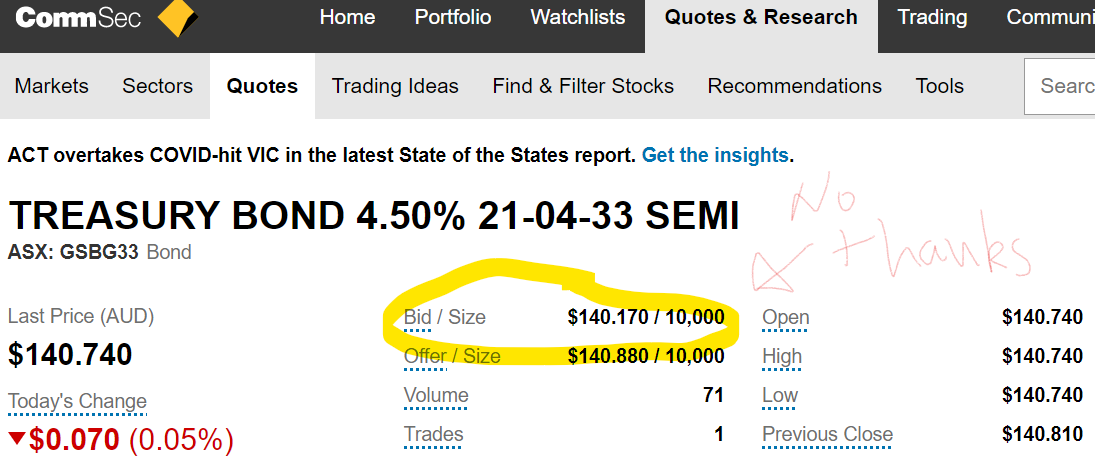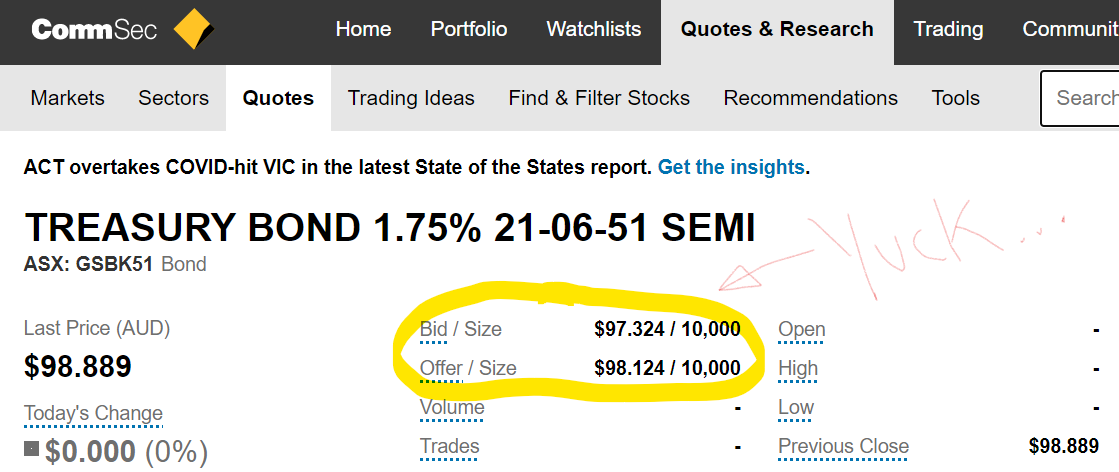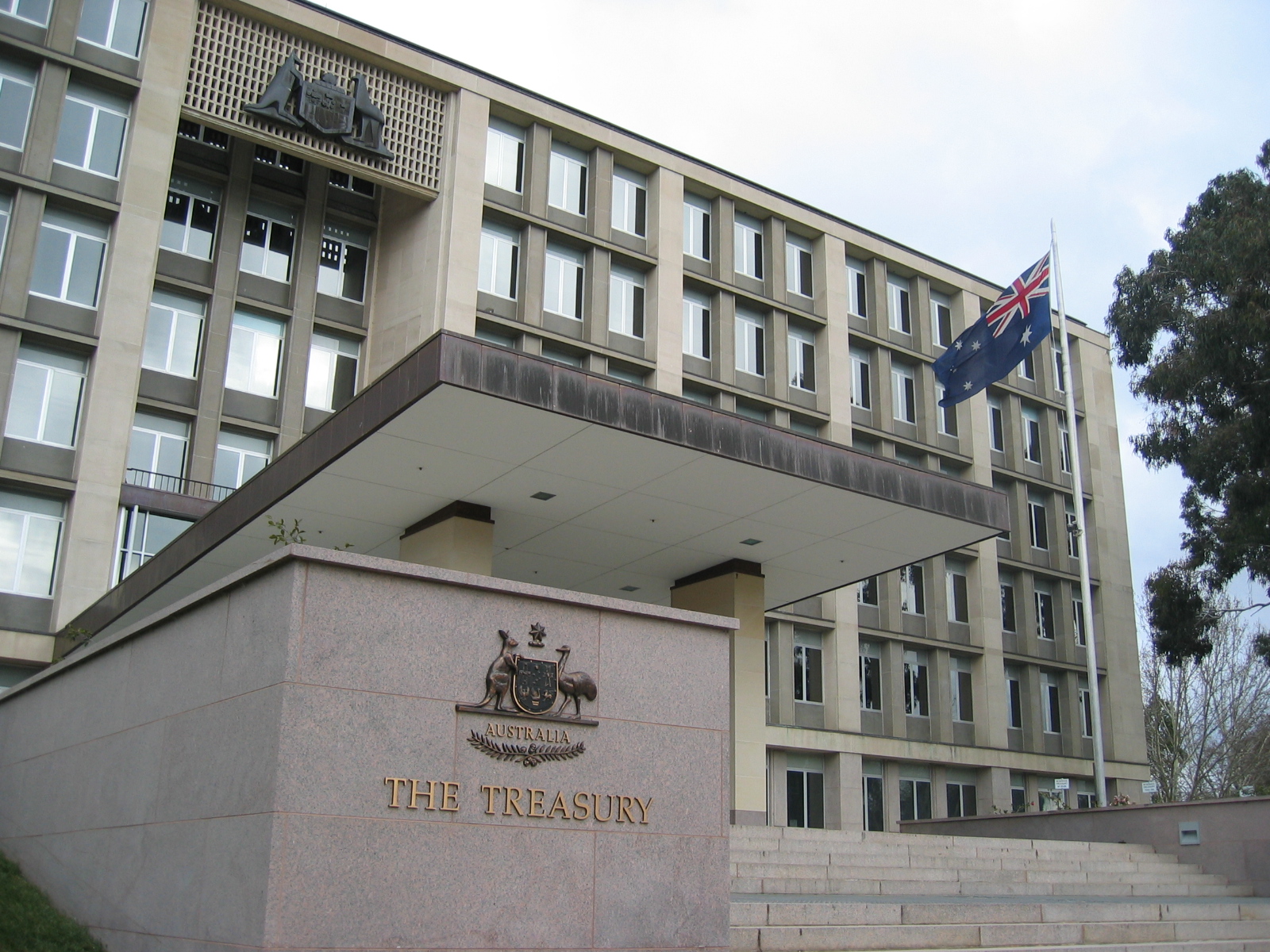Australian government bonds are deeply underused.
Partly because they are boring and never make for barbeque conversation--so fewer people think about them. Partly because they don’t offer incredible returns like shares. Partly also because they’ve never been easy to access.
But ETFs are starting to change that. Australia has three main government bond ETFs. Below we take a look.
TickerFund NameAUMInceptionAGVTBetaShares Australian Government Bond ETF$66.42M2019IGBiShares Treasury ETF$109.92M2012VGBVanguard Australian Government Bond Index ETF$588.76M2012
Investment Strategy
BetaShares Australian Government Bond ETF (AGVT)
AGVT invests in two parts. Part one is 75% Australian state and federal government bonds. Part two is 25% AUD-denominated global bonds, which betrays the fund name. The fund targets bonds with maturities of 7 – 12 years, which ups the fund's interest rate sensitivity compared to its peers. Global bonds eligible for inclusion are from quasi-government entities (like Eurofima, the European train lobby) and development banks. Bonds included are weighted by issuance.
iShares Treasury ETF (IGB)
IGB is the most straightforward of the three. It buys bonds issued by the Australian Treasury—that it. State and territory government bonds ("semis") are ineligible. This helps ensure the fund is highly liquid, as Australian government bonds are heavily traded. This also helps manage credit risk and hedging, as there is only one issuer. Liquidity is helped further by IGB’s holding fewer securities than its competitors. Bonds with one month or more to maturity are eligible, and weighted by issuance.
Vanguard Australian Government Bond Index ETF (VGB)
VGB invests very broadly in bonds issued by Australian federal, state and territory governments. Bonds are chosen and weighted based on issuance, but also accessibility and trading costs. The extensive use of state and territory bonds – even the ACT, NT, TAS, which are harder to find – ensures wide coverage and higher yields. It also provides investors access to a pocket of the bond market they would not typically access.
AGVTIGBVGBBond selectionIssuer, Market value, MaturityMarket valueMarket valueBond weightingMarket value, TieredMarket valueMarket valueNumber of securities5529134Index rebalanceMonthlyMonthlyMonthlyDistribution frequencyMonthlyQuarterlyQuarterly
Fees and tradability
Bond ETF fees need to be put in perspective.
Analysing bond ETF fees must start by acknowledging that bond ETFs are always saving you money. And just looking straight at the fee is misguided. Why? Because of trading costs.
AGVTIGBVGBFee0.22%0.18%0.20%Fund operational costs0.02%0.00%0.08%All-in management fee0.24%0.18%0.28%
Trading bonds directly is expensive, but trading bond ETFs is very cheap. Let’s walk through some examples with some screenshots I've taken from CommSec. Below is the Treasury 4.5% that matures in 2033 – it is a middle of the basket government bond included in VGB. If you want to buy this bond directly on exchange it costs 0.50% round trip. This compared to the 0.10% round trip for trading a bond ETF.

Taking another example: the new 30-year, which is also included in the ETFs. It costs a cool 0.90% round trip. Bond ETF fees do not look so bad now, do they?

In the wholesale market – where banks and brokers trade bonds in big packages – government bonds are cheaply traded. However retail investors and (most) advisers cannot participate in the wholesale bond market. They simply aren't trading in large enough chunks.
AGVTIGBVGBMonthly traded value ($mln)$28.7$4.3$68.7Spreads0.09%0.07%0.04%Average 52 week premium0.05%-0.01%0.00%
Among the three, iShares is the cheapest on a 0.18% all-in fee. That it then comes with 0.07% ASX spread makes it absurdly cheap. iShares bond ETFs also have the best trading history. During March and April - when coronavirus volatility peaked - iShares bond ETFs traded on the smallest discounts and ensured investors could always exit at fair value.
VGB has the highest all-in fee. But that’s largely a result of the transaction costs incurred by buying semi government bonds and in the secondary market. VGB then comes with the cheapest spreads thanks to its heavy trading volume on the ASX.
AGVT has fees somewhere in the middle but spreads a smidge wider.
Performance and yield
Past performance
Looking at performance for these bond ETFs, there are a number of ways to skin a cat. On a 1-year total return basis, AGVT has been the best performing by a comfortable margin. However a 1:1 comparison is impossible due to its inclusion of foreign bonds. The fund is also newer, meaning a longer-term comparison is not possible.
AGVTIGBVGB1 year total return5.63%3.31%3.85%3 year total return-5.86%5.76%5 year total return-4.34%4.38%
Of the other two, VGB has outperformed IGB over 1 and 3 years, thanks to its inclusion of semi government debt. However over the past 5 years there has been virtually no difference.
Future performance
Bonds have an advantage over shares in that their future returns can be accurately predicted. The crystal ball, of course, is yield to maturity. This shows the return you’d get if you held all the bonds in the ETF to maturity.
AGVTIGBVGBRunning yield2.20%2.49%2.69%Yield to maturity0.83%0.60%0.61%Modified duration (years)7.96.96.6
The next piece is running yield. This shows an ETF's ability to generate income. Here, VGB takes the lead thanks to its more extensive use of semis. However note that AGVT makes its distributions every month -- not once a quarter. This is a great feature and makes AGVT very useful for investors - such as retirees - that need steady income.
The final piece is modified duration, which measures interest rate sensitivity. High duration means you’ll make big gains if interest rates fall, or suffer big losses if they ever rise again. AGVT is designed to be more interest rate sensitive.
Issuer and credit rating
Credit ratings should always be taken with a heaped tablespoon of salt.
But, for the better or worse, ratings matter as they can move markets. Institutional investors – such as banks and insurers – have to hold a certain amount of high rated credits. This means that when bonds get downgraded, their prices can fall as these institutions have to sell them in bulk. Asset managers – including ETFs – can also become forced sellers when bonds get downgraded as bonds can get removed from indexes or mandates.
AGVTIGBVGBAustralian Government54.4%100%69.3%VIC4.1%0%6.1%NSW6.3%0%7.5%QLD5.4%0%9.5%WA1.6%0%3.9%SA1.7%0%2.0%ACT0.3%0%0.6%NT0.5%0%0.7%TAS0.2%0%0.5%Foreign entity25.6%0%0.0%
All this means that it is highly unlikely that credit ratings will effect any of these funds in the foreseeable future. The Australian government’s bonds are rated AAA—the highest rating. Many of the states and territories hold that rating too. There is no evidence of a pending downgrade except perhaps for Victoria, which is on negative watch. The Australian government debts are all AUD denominated too—so in a worst case scenario the Reserve Bank of Australia can simply print money to buy the bonds, as has happened in other parts of the world.
Where ratings could get complicated is for the global bonds in AGVT. Supranationals and development banks—is not clear how the index would respond to ratings downgrades. However a lot of these entities are de facto government guaranteed and on AAA ratings anyway.
Verdict
AGVT has the advantage of having a longer maturity profile, meaning it will continue outperforming if interest rates go negative (I suspect they will). That AGVT pays distributions monthly, not quarterly, makes it a more useful income tool. I think the fund name should be altered to reflect its use of global bonds.
VGB has the best ASX spreads and yield. It's broad diversification makes it the most appropriate for buy and hold investors. It's steady AUM growth suggests that's how its being used.
IGB is the cheapest and its exclusive use of liquid commonwealth treasuries ensures that its a straightforward way to trade interest rates. To me, it looks like the best ETF for Australian government bonds. Although it is a very close race.





